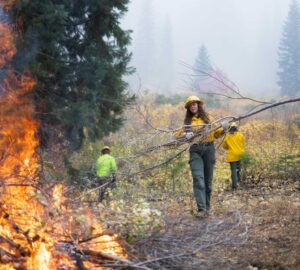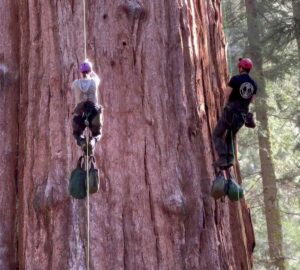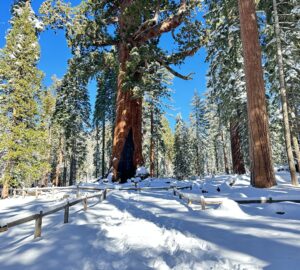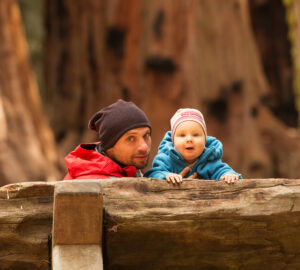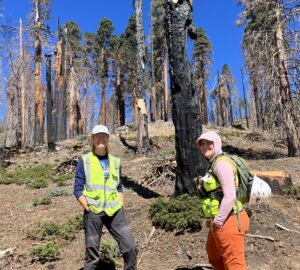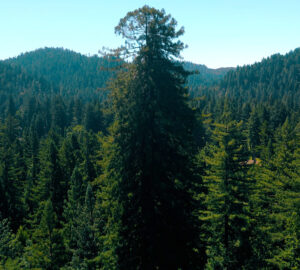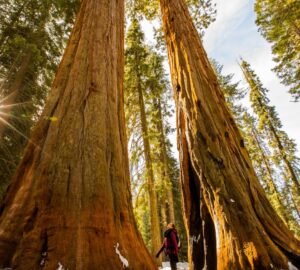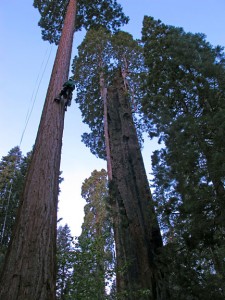
It’s fairly difficult for me to imagine living for 3,000 years. Yet giant sequoias live for millennia, standing tall in a single location as the years, decades, and centuries tick by. They are pounded by rain, snow, sweltering heat, lightening, and forest fires. I know that I could not handle such adversity and absolutely love seeing how these resilient trees continue to grow after spectacular affronts by nature.
At Mountain Home Grove, in the Sierra Nevada Mountains, our Redwoods and Climate Change Initiative researchers are studying the growth rates of redwoods like the ones pictured here. In the center of the photograph is a very burned-up giant sequoia that is not at all dead.
The charred trunk is alive on the other side of the tree and two vigorous sprouts are growing skyward at the top of the burned trunk. How can redwoods like this one survive such extreme damage from fire? They can overcome partial burns like this one because the center of the tree isn’t actually alive. Once wood is made, the cells die and become empty so water can flow through the wood. Heartwood at the center of the tree is primarily used for storage and only the newest wood (called sapwood) near the outside of the tree is used to transmit water up to the treetop. So when a fire burns into the center of the tree, a redwood can keep growing as long as it has enough intact bark and new wood on part of its trunk.
Redwoods are much more tolerant of fire than other tree species – just another reason redwoods are so cool!
Visit the Giant Sequoias fact page to learn more about these massive and resilient trees.

